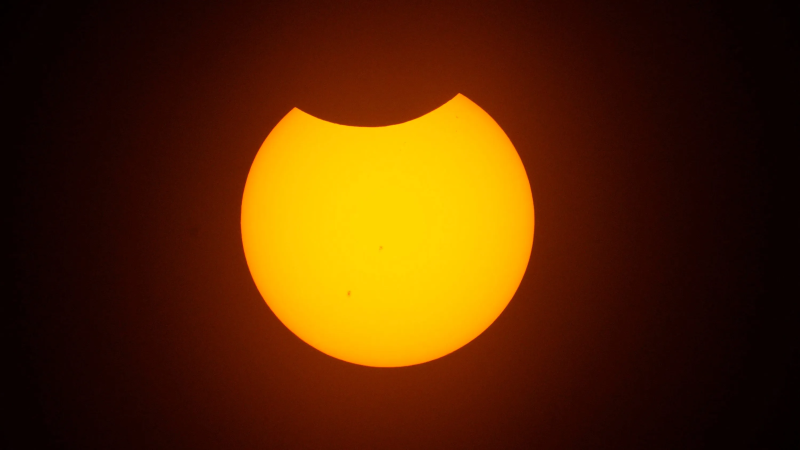An eclipse-themed treat: Sonic's new Blackout Slush Float available starting today
Starting today, Sonic Drive-In has a new limited-edition drink available called the Blackout Slush Float to give fans an "out-of-this world experience" just in time for the extremely rare total solar eclipse.
Customers can order the new Blackout Slush Float nationwide at participating locations starting March 25 until May 5. Sonic will also be handing out free solar eclipse viewing glasses with every purchase of the new treat, while supplies last, to ensure their customers can "safely watch the eclipse and create fun memories."
The new drink includes flavors of cotton candy and dragon fruit, according to Sonic, with the all-black slush representing the temporary darkness from the solar eclipse and is topped with white soft serve and blue and purple galaxy themed sprinkles.
Sonic says the eclipse viewing glasses have been approved for short term direct observation of the sun by the International Organization for Standardization and have been lab tested to ensure they are safe and meet all applicable rules and regulations.
The fast-food chain is also offering $1.99 Crispy Tender Wraps in Hickory BBQ from March 4 to May 5 for those looking to grab an inexpensive snack with their Blackout Slush Float.
There are more than 400 Sonic locations within the path of the eclipse's totality. Sonic also invites guests to head to their local Sonic location to watch the eclipse while enjoying their Blackout Slush.
A total eclipse is near.For some, it's evidence of higher power. For others it's a warning


What is a solar eclipse?
Any celestial object like a moon or a planet that passes between two other bodies can create an eclipse by obscuring the view of objects like the sun.
A total eclipse occurs when the moon appears as the same size as the sun and blocks the entire disk from Earth, leading to a period of darkness lasting several minutes. The resulting "totality," whereby observers can see the outmost layer of the sun's atmosphere known as the corona, confuses animals – causing nocturnal creatures to stir and bird and insects to fall silent.
When and where to see the April 8 total solar eclipse
On April 8, the potentially once-in-a-lifetime total solar eclipse will chart a 115-mile-wide path of totality across portions of Mexico the United States and Canada.
In the U.S. alone, hundreds of cities and smaller towns in 13 states lie along the path. An estimated 31 million Americans already live on the path, while millions more tourists are already making travel plans – sure to snarl traffic – to catch a glimpse of what is sure to be a spectacular sight, according to eclipse cartographer Michael Zeiler at GreatAmericanEclipse.com.
Mexico's Pacific coast will be the first location in continental North America to experience totality, which will occur at about 11:07 a.m. PDT, according to NASA.
As the moon's shadow travels northeast, totality in the U.S. will begin at 1:27 p.m. CDT in Eagle Pass, Texas. From there, the path will cut diagonally across the country before ending it's time in the U.S. around 3:33 p.m. EDT in Lee, Maine and entering Canada's maritime provinces, according to nationaleclipse.com.
Along the way, periods of darkness could last a mere few seconds or, in some cities, could surpass four minutes. And as if the dazzling solar eclipse won't be enough, there's a small chance that the horned "devil comet" may make an appearance that same day as it makes its closest orbital approach to Earth later in the month.
If you want to see the time and duration for when totality would occur near each of these locations, see these interactive maps.
Why is this year's total solar eclipse special?
The last time North Americans witnessed a total solar eclipse in 2017, the sun's activity was at a minimum.
This time around, though, the sun will be at the peak activity of an 11-year solar cycle, making its elusive corona especially visible, astronomers say.
Meanwhile, the moon will be closer to Earth than it was seven years ago, making it appear larger in the sky and increasing the length that darkness will last in many places, according to eclipse2024.org.

Contributing: Eric Lagatta, USA TODAY
Disclaimer: The copyright of this article belongs to the original author. Reposting this article is solely for the purpose of information dissemination and does not constitute any investment advice. If there is any infringement, please contact us immediately. We will make corrections or deletions as necessary. Thank you.







